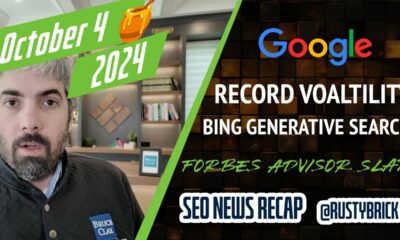MARKETING
Page Experience is Here to Stay: Moz Launches Performance Metrics Suite

The author’s views are entirely his or her own (excluding the unlikely event of hypnosis) and may not always reflect the views of Moz.
Way back in April 2021, I had the honor of announcing a new beta Moz product: Performance Metrics. It arrived just in time for SEOs to track and improve their sites through the anticipated May launch of Google’s Page Experience update. We uniquely offered at-scale tracking and issue identification against Core Web Vital metrics for hundreds of URLs per campaign, rather than the handful of URLs available in competing tools at the time.
Back then, we (correctly) anticipated a minimal initial impact from the update, but even we didn’t foresee Google’s delay of the full rollout until August. However, sites are now seeing a real world impact from Core Web Vitals, as our recent study showed back in October. Google is talking about extending that impact to desktop from February or March 2022 (something that our tool has always allowed you to compare cohesively in one campaign), and it seems likely that the importance of these ranking factors will only increase.
Now is the time, then, for us to bring Performance Metrics out of beta and help our customers prepare for the next stage of Google’s Page Experience update this spring. Today, we’re announcing the full launch of Performance Metrics, including a host of new features and improvements based on the feedback we’ve received from early adopters, as well as our own experts and data.
Sign up for Moz Pro to access the suite!
Already a Moz Pro customer? Log in to access the suite!
What’s new
Many users have already been enjoying the bulk analysis, issue identification, and tailored, tactical advice we’ve been offering in Performance Metrics. However, since the beta launch, customers have consistently asked for automated, scheduled testing of lists of URLs, and displays of page performance over time. This makes total sense to us — tracking improvements to see the fruits of your efforts, and identifying when any issues appear, are both great uses for the tool. As such, we’ve included both of these features in the full launch.
Of course, the on-demand analysis you might have already been enjoying in the beta is still there, but with some UI improvements along the way. In particular, you can now re-test the same page multiple times per day, if you want to take some new changes for a quick spin.
Last but not least, as this tool is no longer in beta, you can now also track all of this alongside metrics like visibility, DA, Spam Score and any and all other Moz Pro data in custom scheduled reports.
Why now?
Core Web Vitals are for life, not just for Christmas. Yes, the update finally arrived in August 2021, but that was only the start of the journey — we can and should expect Google to ramp up the importance of these metrics as they gain confidence in the quality and coverage of their own data, and in the health of affected websites.
There’s also the desktop rollout this spring that I mentioned above. Lastly, there may be two new metrics coming — which we’ll of course be integrating into our product once they’re confirmed — probably relating to smoothness and responsiveness. Google has previously indicated an annual cadence of updates to Core Web Vitals, so as an industry we shouldn’t be surprised by this.
As a reminder, by late last year we were already seeing slower pages suffer in rankings, and Google’s methodology of using CrUX data means that sites will often be judged by their most highly trafficked pages.
Our Performance Metrics tool, even in beta, was designed to help marketers prioritize pages to work on, and then issues to address, within this paradigm — we let you sort pages by traffic or ranking or PA, analyze or track whichever ones interest you without limiting you to one page at a time, then see which pages are failing in which areas, and what specific issues and elements are causing those problems. Which might be leaving you wondering…
How to use Performance Metrics in Moz Pro
When you log into Performance Metrics (Moz Pro -> Campaigns -> Site Crawl), you’ll now see there are two tabs in the overview:
The second tab shows URLs which will be automatically tracked over time. You can add to this list using the same filters and menu that you might be familiar with from the beta. Just scroll down on the first tab, and you’ll see a table like this:

Here you can add URLs in bulk or individually to analyze, track, or perform other actions.
To make things even easier, you can filter the table and charts even further, to include only your top ranking, top traffic, or top Page Authority pages:

Within the tracked tab, you’ll then gradually start to see charts form like this one:

And, when you inspect the individual URLs, you can see their own performance over time, as well as specific changes to individual metrics, and tailored advice on what to improve – down to individual resources or elements that need to be addressed, and jargon-free tips from the Moz team.
There’s more detailed guidance available over at the help section, and of course our customer support team is there for you with any questions.
Focus for 2021
There’s more to SEO than Core Web Vitals, but that doesn’t mean you can take your eye off the ball. Focus on a holistic user experience that will be robust to future metrics and tweaks from Google, and particularly on your high traffic pages that are more likely to be the basis for any judgment cast on your site. Lastly, remember your competitors aren’t standing still — they may even be reading this very blog post and using our Performance Metrics suite. The goal posts march inexorably forth.
Source link

















You must be logged in to post a comment Login